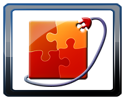Author: Dmitri Popov
The bookmark tagging feature introduced in Firefox 3 is not particularly difficult in use: when bookmarking a Web page, enter the tags you like into the Tags field of the bookmarking dialog window and you are pretty much done. Tagging provides a more flexible way of keeping track of bookmarks than traditional folders. The folder-based system provides an “either/or”-solution to filing bookmarks. For example, you could place a bookmark for an article about installing OpenOffice.org on Puppy Linux in either a Linux or OpenOffice.org folder, but not in both. With tags, you don’t have this problem: you can assign as many tags as you like, so the bookmark becomes filed under several categories at the same time.

The ease of use doesn’t mean, though, that the tagging feature in Firefox can’t be improved. Three extensions — HandyTag, Tagmarks, and TagSifter — are aimed to make the process of tagging bookmarks even more straightforward and efficient.
The trickiest and most time-consuming part of tagging a bookmark is to decide which tags to use. Add too many tags to bookmarks and you end up with a tagging mess. On the other hand, sticking with just a few tags makes the tagging feature less effective. Also, when you want to bookmark an interesting article so you can read it later, how can you choose relevant tags without actually knowing exactly what the article is about?
Here is where the HandyTag extension comes in. Basically, it can pick relevant tags for you, using several techniques. When installed, the extension adds a few extra buttons to the Bookmark dialog window, and each button uses a specific source to generate a list of tags. For example, the Perso button lists all the tags you’ve used previously, while the Webmaster button shows a list of keywords specified in the particular Web page. As the name suggests, the del.icio.us button retrieves a list of tags used by others to tag the same bookmark on the Del.icio.us bookmarking service. Finally, the KGen button generates a list of tags by analyzing the content of the page. No matter which button you choose, the process of adding tags remains the same: tick the tags you like in the list and press Done.
Similar to HandyTag, the Tagmarks extension makes it easier for you to tag your bookmarks, but it does so in a different way. The extension adds extra icons that pop up when you hover the mouse over the Star icon in the Address bar. To bookmark the current Web page and assign it a specific tag, just press on the icon you like. For example, if you want to bookmark a Web page and tag it as a favorite, click on the Heart icon. Tagmarks has another clever trick up its sleeve. Choose Bookmarks -> View Tagmarks tags, and you see a page with all Tagmarks tags. You can then click on any tag to display all the related bookmarks.
Tagmarks’ main strength is the ability to bookmark and tag a Web page with just a single click — but it has a few limitations. You can’t change the names of the tags, so you have to remember how you interpret each icon (e.g., Heart means interesting article, Earphone means music, and so forth). You can’t add other tags either, so, at least for now, you are limited to the available icons.
To turbocharge the bookmark tagging feature in Firefox 3, you might want to use HandyTag and Tagmarks together. When you want to quickly bookmark and tag a Web page, you can use the tags offered by Tagmarks, while the HandyTag extension comes in, well, handy when you need help choosing tags that provide the best possible description of a particular Web page.
HandyTag and Tagmarks can help you to speed up the tagging process, but when it comes to locating bookmarks using tags, the TagSifter extension is your best friend. TagSifter adds a menu and a sidebar that can help you to quickly find bookmarks by their tags. The Bookmarks -> TagSifter menu provides a hierarchical menu containing all your tags, and you can locate the bookmark you are looking for by drilling down the menu.
The TagSifter sidebar is divided into two panes. The upper pane contains a list of all tags. Click on a tag in the list, and the related bookmarks appear in the lower pane. You can select multiple tags to make your search more precise. TagSifter also includes so-called set operators that allow you to create sophisticated search queries. For example, you can create a query that finds bookmarks the names of which contain the word “productivity” and which are tagged as “linux.” For a full list of the available operators, take a look at TagSifter’s Web site.
Tagging your Firefox bookmarks can help you be more productive, and these three extensions can improve your tagging capabilities.
Every Monday we highlight a different extension, plugin, or add-on. Write an article of less than 1,000 words telling us about one that you use and how it makes your work easier, along with tips for getting the most out of it. If we publish it, we’ll pay you $100. (Send us a query first to be sure we haven’t already published a story on your chosen topic recently or have one in hand.)
Categories:
- Internet & WWW
- Reviews


